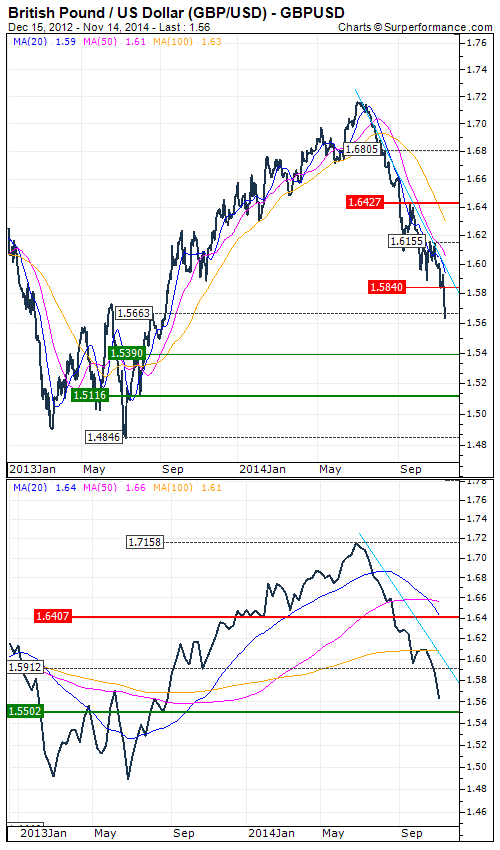British Pound / US Dollar (GBP/USD) : Will the cable drop?
By Anas Boumedian
On the other side of the Atlantic, the FED ended recently its quantitative easing program after six years of existence, countering the increase in the amount of money circulating in the economy. This resolution propelled the dollar to its highest levels since two years in order to impose its supremacy over the other currencies.
The American statistics announced lately have come to consolidate the greenback, supporting the economic toughness of the world’s leading power. The figures are back to historical levels, appearing mostly better than expected. In fact, the third quarter GDP exceeded expectations by far. Unemployment rate was 5.8%, reaching its lowest level since August 2008, whereas consumer confidence hiked up to its highest point since October 2007.
In the United Kingdom, the monetary policy stays featureless while the other central banks pass the relay regarding their asset purchase programs, particularly with the Japanese quantitative easing launching and the ECB initiating ABS purchases. In fact, the size of the Bank of England asset purchase remains unchanged, since its enlargement in 2012. The financial institution maintains its interest rates on their low level record since 2009, still promoting growth doping. Hopes linked to a possible interest rates rise, which might act in favor of the British Pound, collapsed again.
In its quarterly report concerning inflation, the BOE announced that it has dropped to 1.2%, its lowest level since five years, while it targeted 2%. The central bank added that inflation should continue its decrease to go under 1%. This came to strengthen the fact that it will not raise its interest rate before the end of 2015.
Regarding economic figures, the BOE is revising negatively its GDP estimates, given the risk linked to the reduced activity in the euro zone that is likely to weigh on British exports. Moreover, employment data does not display a substantial improvement. Those announcements triggered a negative feeling on the British economy, penalizing its currency.
Thus, the economic situation added to the progressive decrease of dollar liquidity as well as the unlikely rise of the British interest rates before the end of 2015, suggests a gradual decline of the sterling.
Graphically, the cable is on a bearish trend on all time scales. The pair has fallen sharply since July and does not cease to reach one year low levels record, testing and breaking down new supports. Currently, the currency hit its lowest price since September 2013.
Due to these macroeconomic and technical factors, we are taking a short position on the midterm, targeting the downside price of USD 1.51, through a possible technical pause on contact with the first USD 1.539 support. However, the position will be protected above USD 1.59, in case of a relaunch of the British currency dynamism.





